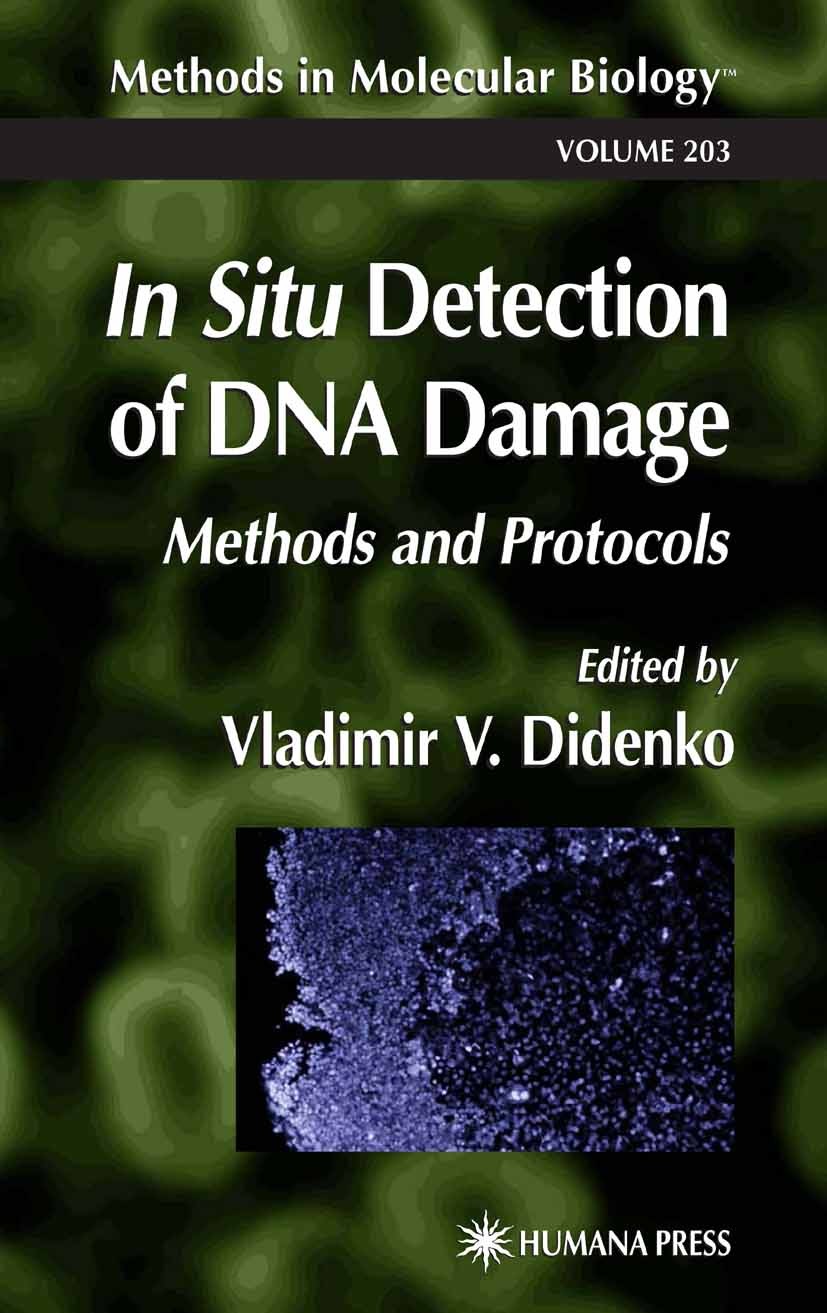| 书目名称 | In Situ Detection of DNA Damage | | 副标题 | Methods and Protocol | | 编辑 | Vladimir V. Didenko | | 视频video | http://file.papertrans.cn/463/462982/462982.mp4 | | 概述 | Includes supplementary material: | | 丛书名称 | Methods in Molecular Biology | | 图书封面 |  | | 描述 | Detection and analysis of DNA damage is of critical importance in a variety of biological disciplines studying apoptosis, cell cycle and cell di- sion, carcinogenesis, tumor growth, embryogenesis and aging, neu- degenerative and heart diseases, anticancer drug development, environmental and radiobiological research, and others. Individual cells within the same tissue or in cell culture may vary in the extent of their DNA damage and, consequently, can display different re- tions to it. These differences between individual cells in the same cell popu- tion are detected using in situ approaches. In situ is a Latin term meaning “on site” or “in place.” It is used to denote the processes occurring or detected in their place of origin. In mole- lar and cell biology this usually refers to undisrupted mounted cells or tissue sections. In that meaning “in situ” is used as part of the terms “in situ PCR,” “in situ transcription,” “in situ hybridization,” “in situ end labeling,” and “in situ ligation.” Sometimes the “in situ” term is applied at the subcellular level to cells disrupted in the process of analysis, for example, in the detection of specific sequences in chromosomes using fluoresc | | 出版日期 | Book 20021st edition | | 关键词 | DNA; FISH; Fluoreszenz in situ-Hybridisierung; Ligation; Termination; Translation; electron microscopy; mic | | 版次 | 1 | | doi | https://doi.org/10.1385/1592591795 | | isbn_softcover | 978-1-61737-272-8 | | isbn_ebook | 978-1-59259-179-4Series ISSN 1064-3745 Series E-ISSN 1940-6029 | | issn_series | 1064-3745 | | copyright | Springer Science+Business Media New York 2002 |
The information of publication is updating

|
|
 |Archiver|手机版|小黑屋|
派博传思国际
( 京公网安备110108008328)
GMT+8, 2025-11-19 03:22
|Archiver|手机版|小黑屋|
派博传思国际
( 京公网安备110108008328)
GMT+8, 2025-11-19 03:22


